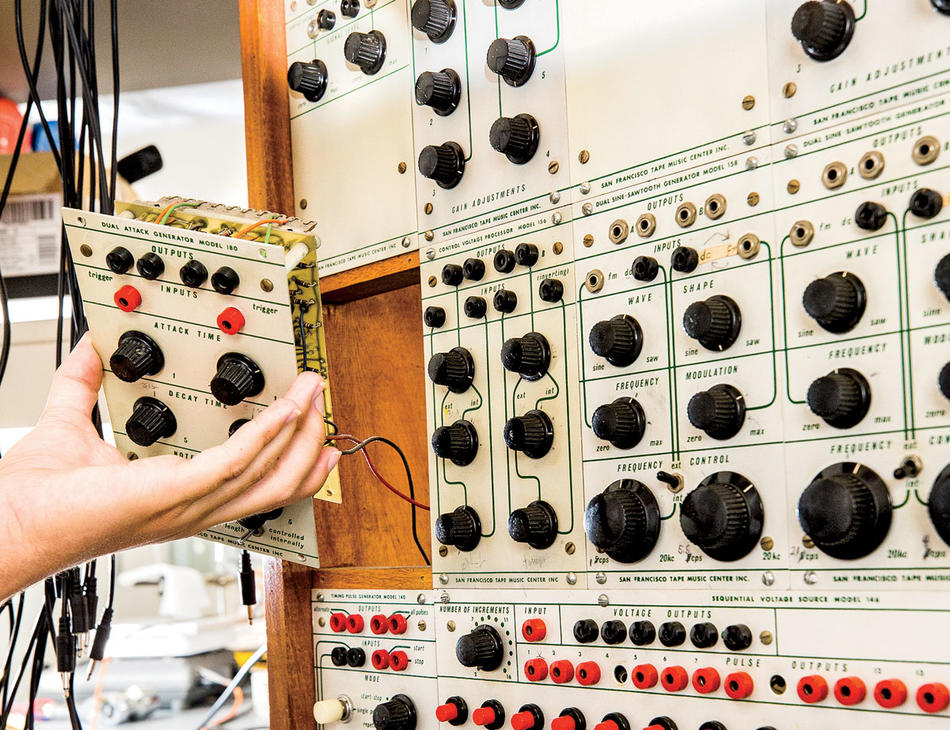WHAT IS IT? Restored vintage Buchla synthesizer, 100 series
WHEN WAS IT MADE? Mid-1960s
WHERE CAN I FIND IT? Columbia’s Computer Music Center
In 1964, in upstate New York, Robert Moog ’57SEAS unveiled the first modern synthesizer — or one of the first. Around the same time, an audio engineer in California, Don Buchla, produced the Buchla 100, which had no keyboard and resembled a Mission Control switch panel. While Moog’s instrument entered rock arenas, Buchla’s became the sonic wellspring for composers of electronic music. Musicians twiddled its knobs and dials to produce an almost infinite soundscape of blips, beeps, buzzes, warbles, wheezes, and whirs.
“Buchla wanted the performer and the composer to revel in the electronic nature of the sound and break free from not only Western instruments but also the scale, and even the ideas of melody and harmony,” says David Vallancourt ’81SEAS, a senior lecturer in Columbia’s electrical-engineering department.
Columbia acquired three Buchla 100s in the late 1960s. Two are gone; the other fell into disrepair. Last year, Vallancourt and Brad Garton, director of Columbia’s Computer Music Center, invited a group of student engineers and musicians to fix the machine’s corroded circuitry. The team painstakingly restored the old Buchla to its former chirruping glory.
One of the students, William Mauro ’19SEAS, did a thorough investigation of the period components. “He tracked down every indicator, every original jack,” says Vallancourt. “There’s virtually no way to tell that this Buchla has been rebuilt.”
This article appears in the Winter 2019-20 print edition of Columbia Magazine with the title "Rewired for Sound."



